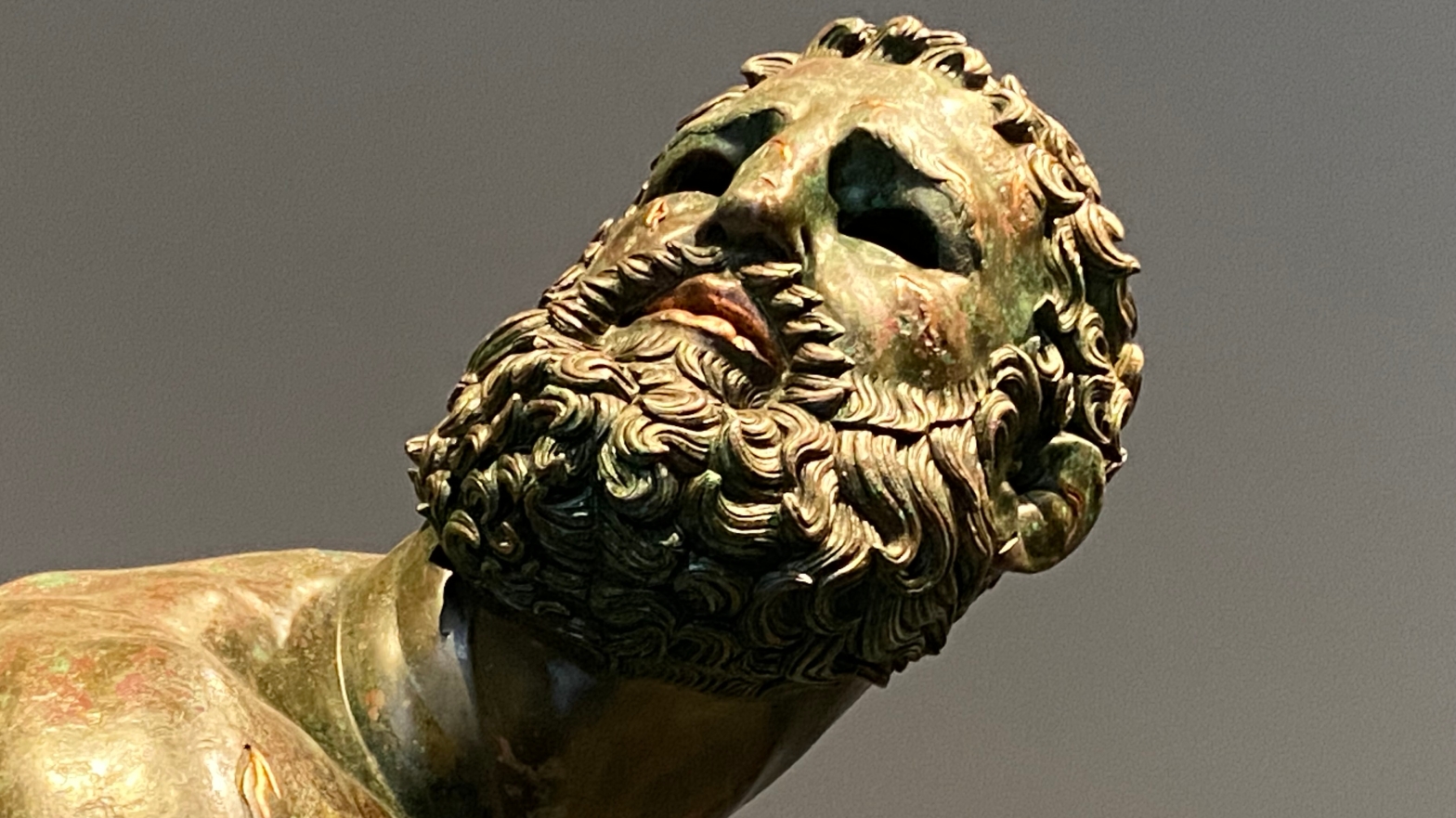National Roman Museum
The bronze statue named “the boxer at rest” is one of the very rare original bronzes found in Rome.
The boxer at rest has aroused, from the moment of his discovery, amazement and wonder. The expression and posture of this athlete impose an emotional participation in the spectator.
The spontaneous question then is: who was this athlete in real life? What is its history? Why do we feel so involved?

The boxer at rest
Bronze statue, attributed to the school of Lysippos
The Greek original, attributed by many to Lysippos, dates back to the 4th century. B.C. and is kept in the National Roman Museum of Palazzo Massimo.
The statue of the boxer at rest is a Greek original in bronze, which is why it is very valuable.
After the fall of the Roman Empire, bronze became very rare and precious. All the statues have been cast over the centuries to make weapons and tools. This statue was saved because it was carefully hidden. It was found, in 1885, after hundreds of years, arousing great amazement and admiration.
And this is still the case today. Entering the room in which it is exhibited, you experience the very strong sensation of finding yourself in front of a man of flesh and blood, alive and true like you. Entering his space means entering his time.
And his time is a very special time.
The Greek language had a specific word for this: “kairos” the fatal time … the moment of the verdict …
The boxer is alone, he is confronted with pain, vulnerability and with the expectation of the final verdict … will he be a winner or a loser?
Suddently you enter in the room and he moves his head towards you and wait the verdict form your mouth…
You cannot stand in front of him without entering into his expectation, without noticing the marks on his face, without feeling his feelings … And in the end you will want to know more about this man you feel you have always known…

There are many theories, which see in the boxer, some mythical hero of ancient Greece.
Personally I prefer the recent hypothesis that instead the boxer was Mys from Taranto: an athlete who really existed in Magna Graecia.
Famous for the defeats suffered and for the tenacity and confidence that led him, at the extraordinary age of 40, to win Olympia matches in 340 B.C.
Lysippus, as a great artist he was, represented him not on the podium … but immediately before … when Mys is thinking about his whole life, trying to find a sense of his earthly experience … In the fateful time, when he asks: what is really worth in life?
Mys is the stoic hero who has won self-respect: there is no greater victory than this…









